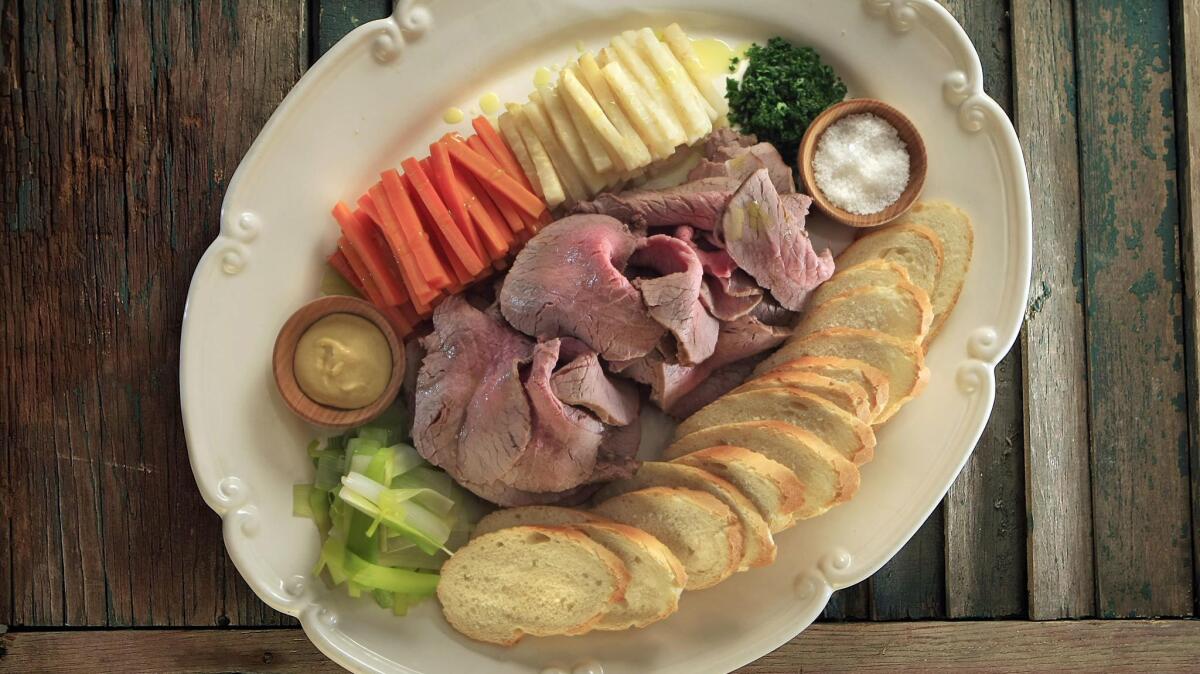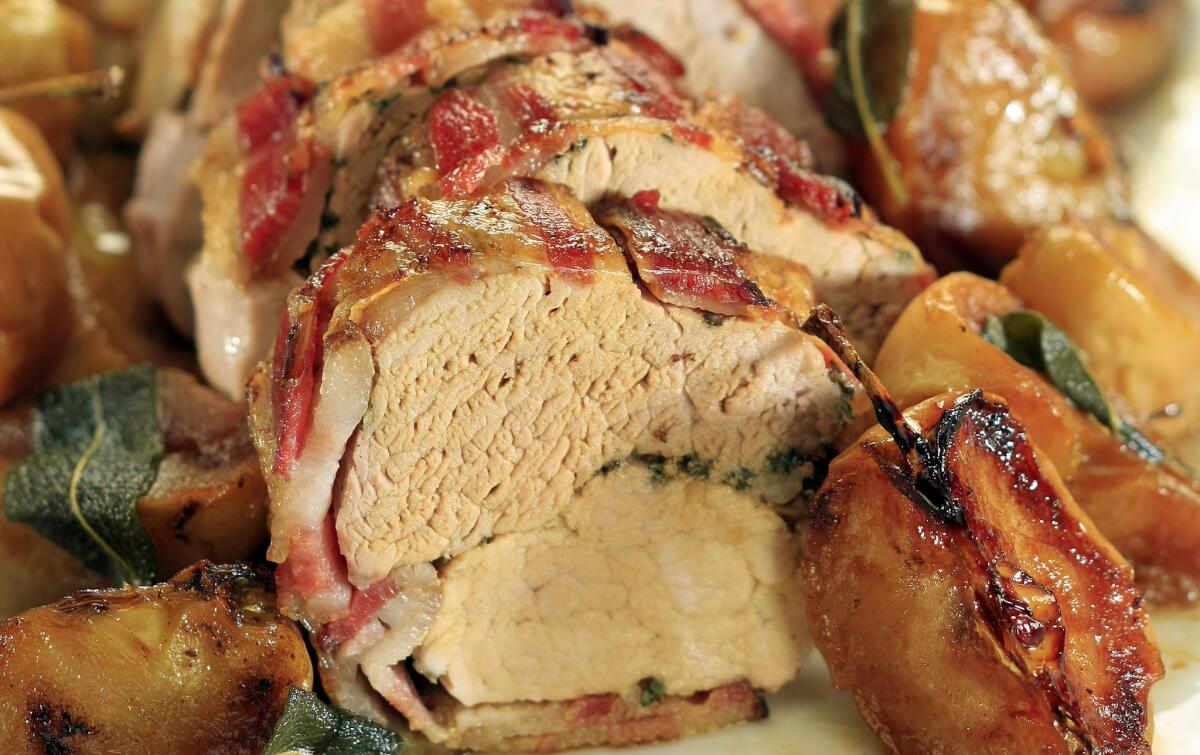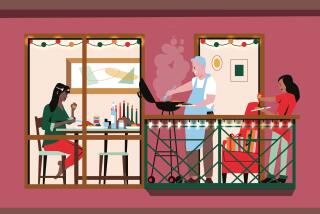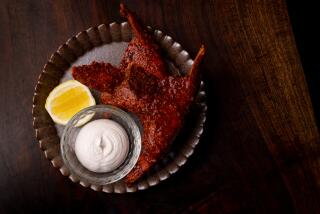A simple ball of string -- no kitchen should be without one

You gotta love any kitchen tool that you can get at Home Depot. At the top of my list of must-have hardware-store cooking gear -- along with an inexpensive Microplane and a blowtorch -- is a simple ball of string. Or at least itâs my favorite until Thomas Keller figures out how to sous-vide with duct tape.
String, specifically cotton butcherâs or kitchen twine, is one of the most useful things you can have in your kitchen. Think about it: With just a simple length of twine, you can tie roasts, wrap a bouquet garni or sachet, tie off sausage links, hang charcuterie, tie roulades, hang yogurt and other items in cheesecloth to drain, support stuffed meats or vegetables, reconstruct cuts of meat, and truss all manner of poultry.
And donât forget quick fix-it projects and crocheted potholders.
Twine is one of those kitchen tools, like plastic wrap and parchment or wax paper, that we often take completely for granted. But consider how many ways you already use it -- and allow for a few new ones -- and you might want to pick up a few more rolls the next time youâre at the hardware store.

Recipe: Bacon-wrapped pork loin with roasted apples Âť
Not only is twine inherently practical, but thereâs also a simplicity about a ball of string thatâs oddly comforting.
So ordinary as to be mundane, made of basic cotton (donât use plastic or plastic-coated, which will melt, or jute, which can be too stiff), a well-wrapped cone, not unlike Keatsâ well-wrought urn, operates as a metaphor for kitchen organization.
âI use twine all the time and every day,â says Michael Cimarusti, chef-owner of Providence restaurant on Melrose Avenue, who admits that it drives him nuts when the stuff goes missing from his kitchen.
Cimarusti -- who learned how to tie knots while fishing as a kid in New Jersey and how to use them in a kitchen while at New Yorkâs Le Cirque restaurant -- uses twine to shape steaks, truss birds and wrap roulades. He also suspends cheesecloth bags of roasted vegetable purĂŠes to drain, using the purĂŠe and the collected juices in recipes. He even uses twine to tag the lobsters in his restaurant kitchenâs lobster tank. (The strings float up, like lines without buoys, from the lobstersâ anchor-like claws.)
Tying cuts of meat and wrapping whole birds with twine helps them keep their shape, which makes for tidier and more uniform cooking. Twine can keep stuffings firmly inside roulades or the cavities of birds. And it can fasten items that you want to keep on the outside, such as herbs or slices of bacon or pancetta (a technique called barding).
âThe hardest thing about string,â says MĂŠlisse chef-owner Josiah Citrin, who uses twine to tie meat in shape before cooking it sous-vide, among many other things, âis to make sure itâs not in the meat when you serve it.â
Donât lose the string
Citrin isnât joking. It may seem obvious, but string can sometimes get lost in a beautifully roasted turkey, or maybe youâve just forgotten it during its long hours in the oven.
One way to remember the string in your dishes is to make further use of it. Keep it wound around a roast or roulade while you slice it -- this helps keep any stuffing or barding intact and also makes portioning easier -- and then cut and remove the bits of string when youâre done.
Recipe: Chicken roulade with red chard, pepitas and chiles over hominy Âť
Michel Richard, chef-owner of Citrus at Social Hollywood, demonstrates some of his favorite uses for kitchen twine in his cookbook âHappy in the Kitchen.â Richard encircles lamb loin with twine before wrapping it in plastic and poaching it; he ties a lamb shoulder into a âmelon,â reconfiguring the meat by the simple process of trussing it to form the specific shape he wants.
Tying is important when reassembling cuts of meat that have been boned, especially if theyâve been re-formed around the bone. Tying a standing rib roast or a large rack of lamb helps prevent the layers of meat from separating during roasting.
âYou can use [twine] as a belt too,â says Richard, who reports that he learned the art of knotting âfrom tying my shoes.â
A note about knots. Although there are many knots to choose from -- there are more than 2,000 in âThe Ashley Book of Knots,â perhaps the definitive book on the subject, published in 1944 -- the square knot is probably the most useful in the kitchen. Just tie two overhand knots, left over right, then right over left: The tidy results will look like two interlocking loops.
âA palomar is my favorite knot to use while fishing,â says Providenceâs Cimarusti, who mostly utilizes the square knot for cooking, âbut alas, itâs useless in the kitchen.â
Maybe a palomar knot would work for a cooking method called Ă la ficelle (âon a stringâ), in which a whole bird or piece of meat is tied up and hung to roast in front of a fire. This bucolic trick was supposedly invented by French novelist Alexandre Dumas (Dumas père, whose book âLe Grand Dictionnaire de Cuisineâ was as influential in some circles as his novel âThe Three Musketeersâ), who was said to have used the method with a whole lamb.
If you donât have a fireplace handy, a more convenient French recipe for boeuf Ă la ficelle can be accomplished with little more than a cut of beef, a pot of broth, a bit of string and a long-handled spoon. Essentially, itâs just poached beef, served medium-rare with some bread, condiments and a few blanched vegetables.
To make it, wrap a rump roast with a long piece of string, tying the meat securely and then use the tails at the end to suspend the beef in a soup pot so that it clears the bottom. Use the handle of a long wooden spoon as a bridge over the top of the pot and tie the ends of the string to the handle.
A flavorful broth
You can poach the beef in plain water, but a subtle homemade broth of carrots, leeks and celery root brings out the beefâs lovely notes. If youâre cutting vegetables to blanch anyway, youâll have a lot of scraps. Instead of throwing them out, use them to make the broth. After the beef poaches, let it rest, then cut it and arrange the warm slices on a platter alongside the blanched vegetables. Itâs an entire meal as still life.
Herbed pork loin is even better when itâs barded with bacon, a simple method thatâs kind of like wrapping a present without tape. Here two tenderloins are rubbed with minced sage and garlic, then covered with apple-wood-smoked bacon. Lengths of twine, spaced out at even intervals, secure the bacon to the pork.
As the pork roasts in a hot oven, the crisping bacon adds moisture and flavor. Add some quartered apples (neither peeled nor cored, they add a pretty, rustic look) and fresh sage leaves part way through the roasting. The rendering bacon fat and accumulating pan juices caramelize the apples -- and make an awesome quick pan sauce when deglazed with a little wine.
For a roulade with a bit of a kick, make a spicy filling of chiles, red kale and toasted pepitas and spread it on pounded chicken breasts. Rolled up and tied with string, the roulades are then seared in a skillet before being finished in the oven. While theyâre cooking, a simple side dish of hominy and diced bacon takes only a few minutes.
Or if all this seems too much for you, just soak a bit of twine in water (to prevent it from burning, Cimarusti says), tie it securely around a juicy New York steak -- the taut string plumps the meat and allows it to cook uniformly -- and throw it on the grill.
And if you leave enough string attached, you can even use it to reel in your steak without ever leaving your patio chair. You canât get much more practical than that.
ALSO
Find more wonderful main course recipes
Eat your veggies too â great vegetable recipes
See hundreds of L.A. Times test kitchen recipes
More to Read
Sign up for The Wild
Weâll help you find the best places to hike, bike and run, as well as the perfect silent spots for meditation and yoga.
You may occasionally receive promotional content from the Los Angeles Times.











